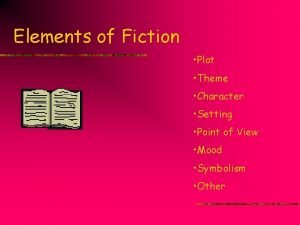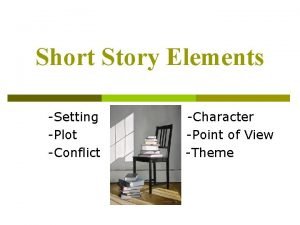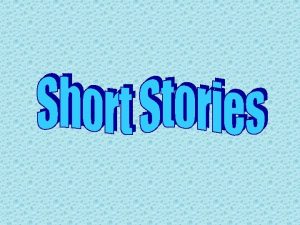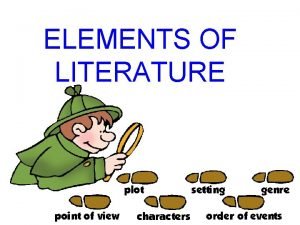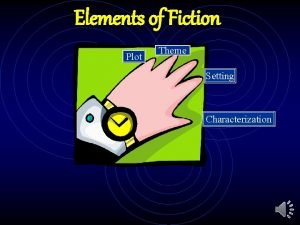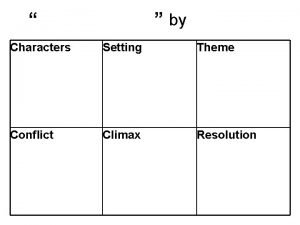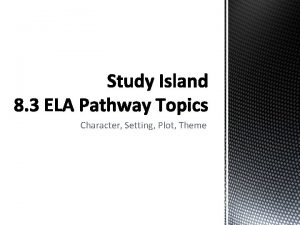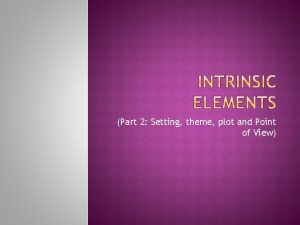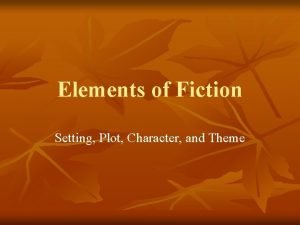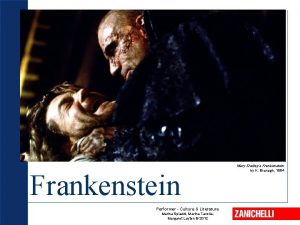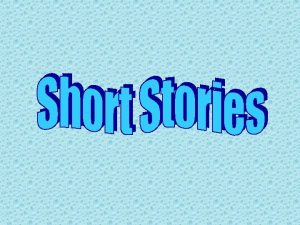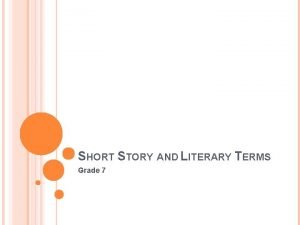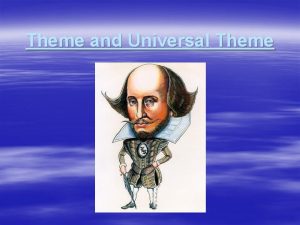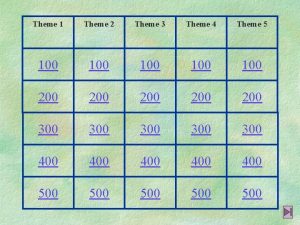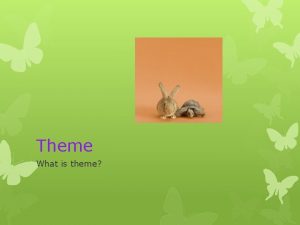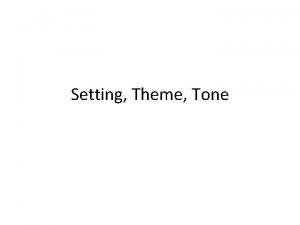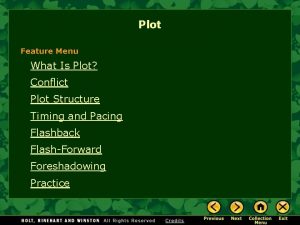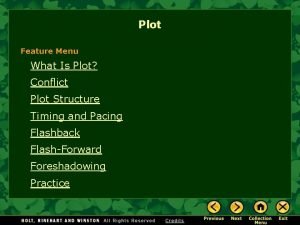Part 2 Setting theme plot and Point of













- Slides: 13

(Part 2: Setting, theme, plot and Point of View)

The setting of a literary work is the time and place of the action. � The setting includes all the details of a place and time – the year, the time of day, even the weather. � The place may be a specific country, state, region, community, neighborhood, building, institution, or home. � The setting of a story often helps to create a particular mood, or feeling.



� The theme of a literary work is its central message, concern, or purpose. � A theme can usually be expressed as a generalization, or general statement, about people or life. � The theme may be stated directly by the writer although it is more often presented indirectly. � When theme is stated indirectly, the reader must figure out theme by looking carefully at what the work reveals about the people or about life.

PLOT Plot is the literary element that describes the structure of a story. It shows arrangement of events and actions within a story.

PLOT COMPONENTS Climax: the turning point, the most intense moment— either mentally or in action Rising Action: the series of conflicts and crisis in the story that lead to the climax Exposition: the start of the story, the situation before the action starts Falling Action: all of the action which follows the climax Resolution: the conclusion, the tying together of all of the threads


PLOT: CONFLICT Conflict is the dramatic struggle between two forces in a story. Without conflict, there is no plot.

PLOT: TYPES OF CONFLICT Character vs Nature Character vs Society Character vs Self

� Point of View is the perspective from which a story is told. It is the relationship of the narrator to the story. �First-person is told by a character who uses the first-person pronoun “I”. �Third-person limited point of view is the point of view where the narrator uses third-person pronouns such as “he” and “she” to refer to the characters.


�Read it together with your group and determine the setting and draw the plot Structure
 Elements of fiction theme
Elements of fiction theme Story with title setting characters and plot
Story with title setting characters and plot What is the setting of the story
What is the setting of the story Setting in a short story
Setting in a short story What is exposition in a story
What is exposition in a story Setting theme plot
Setting theme plot Antonio cruz and felix vargas
Antonio cruz and felix vargas The lion and the mouse plot diagram
The lion and the mouse plot diagram Theme plot setting
Theme plot setting Elements of fiction setting
Elements of fiction setting What is setting and plot
What is setting and plot Frankenstein performer heritage
Frankenstein performer heritage Setting of the story
Setting of the story Characteristics of a short story
Characteristics of a short story
